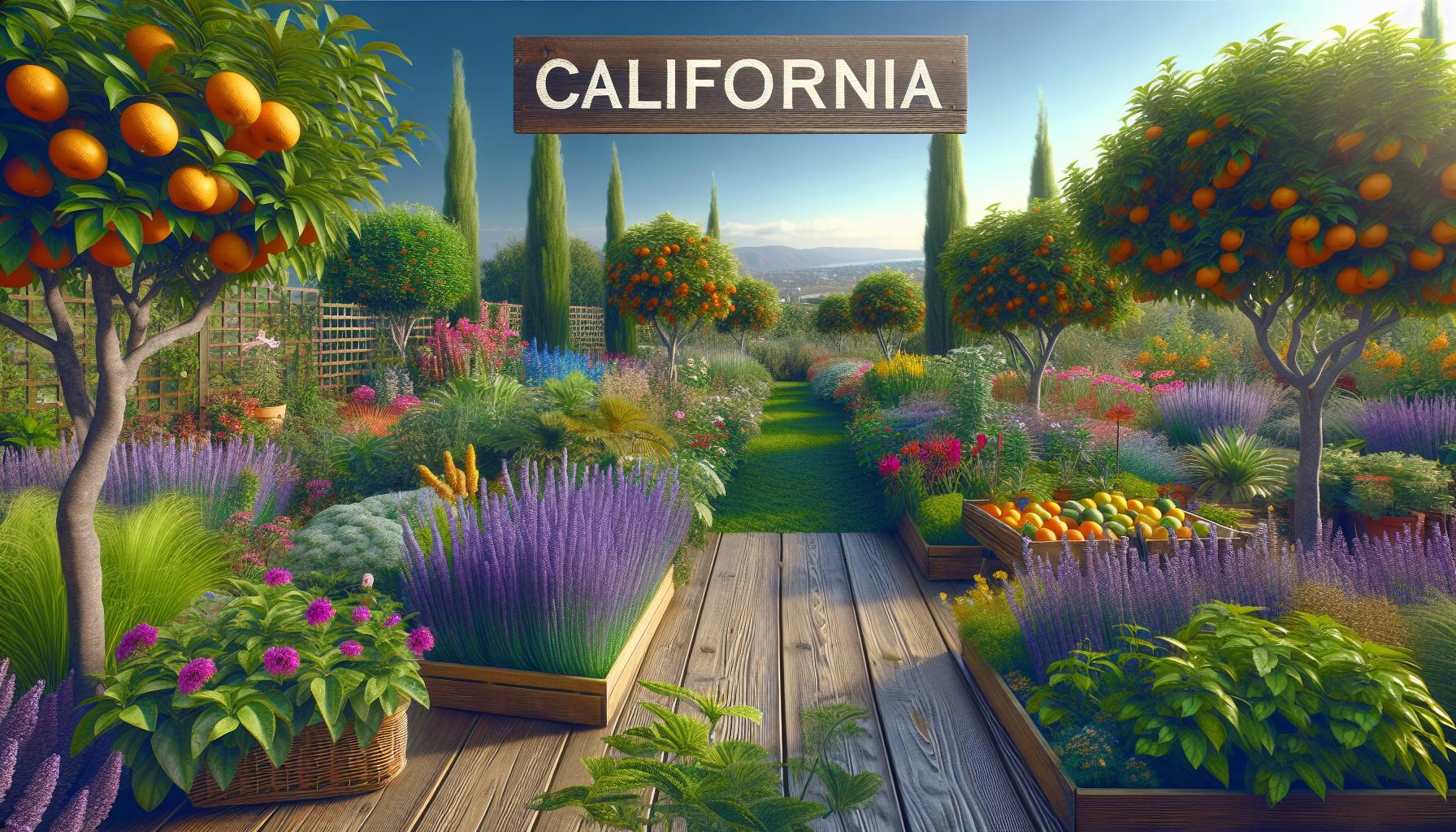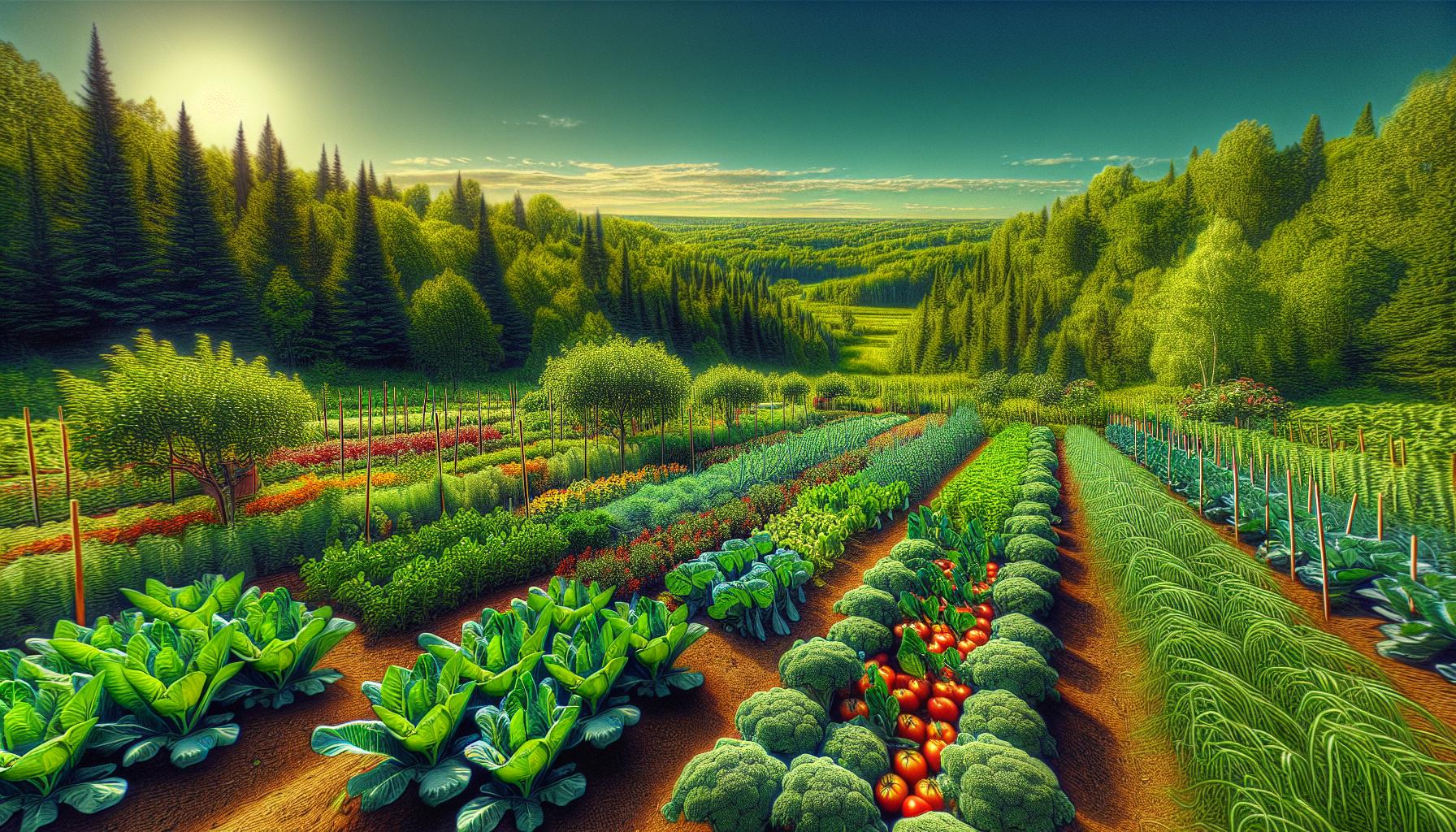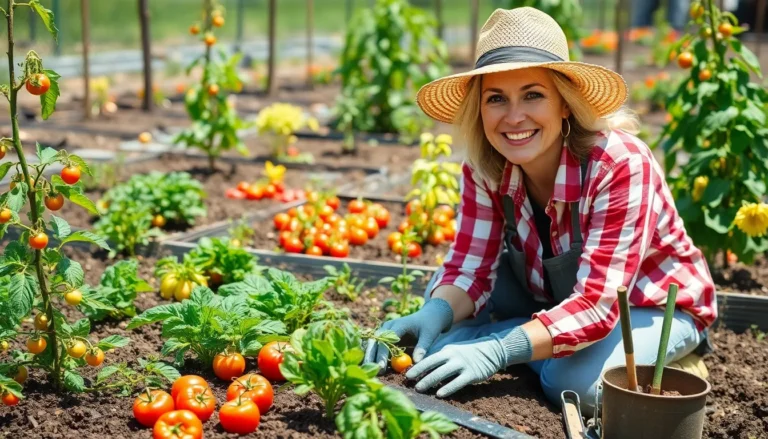As a lifelong gardener I’ve discovered that location plays a crucial role in growing success. While you can garden almost anywhere with the right techniques some states offer particularly favorable conditions that make cultivating plants a true joy.
I’ll guide you through America’s most garden-friendly states where optimal growing seasons rich soil and favorable climate patterns combine to create perfect conditions for both novice and experienced gardeners. Whether you’re planning to relocate or simply curious about where gardens thrive best you’ll find that these states offer unique advantages for growing everything from vibrant flowers to bountiful vegetables.
Key Takeaways
- California and Florida lead as top gardening states with 270+ growing days annually and diverse USDA zones (5a-11a) suitable for year-round cultivation
- The Pacific Northwest (Oregon and Washington) offers exceptional growing conditions with rich volcanic soil and moderate rainfall patterns, ideal for acid-loving plants and diverse crops
- Midwestern states like Minnesota and Wisconsin feature shorter but productive growing seasons (120-180 days), perfect for cold-hardy plants and root vegetables
- Northeastern states benefit from rich glacial soils and four-season climates, making them particularly suitable for hardy perennials, fruit trees, and seasonal vegetables
- Different regions require specific water management strategies, from drainage systems in the rainy Pacific Northwest to efficient irrigation in the Southwest
- Understanding regional pest patterns and disease pressures is crucial for successful gardening across different states
Understanding Climate Zones and Growing Conditions
The United States Department of Agriculture (USDA) divides North America into distinct climate zones that determine plant survival rates. These zones combined with growing season length create specific conditions that impact gardening success in different states.
USDA Hardiness Zones
USDA hardiness zones range from Zone 1 (-60°F) to Zone 13 (above 65°F) across the United States. Each zone represents a 10-degree Fahrenheit difference in average annual minimum winter temperatures, providing critical data for plant selection and growing schedules.
| USDA Zone | Temperature Range (°F) | Example States |
|---|---|---|
| 3-4 | -40 to -20 | Alaska, Northern Maine |
| 5-6 | -20 to 0 | Michigan, Wisconsin |
| 7-8 | 0 to 20 | Tennessee, North Carolina |
| 9-10 | 20 to 40 | Florida, California |
Length of Growing Season
The growing season spans from the last spring frost to the first fall frost, varying significantly by state location. Northern states typically experience 120-150 frost-free days, while southern states enjoy 250-300 growing days annually.
- Frost dates marking season boundaries
- Daylight hours affecting plant growth cycles
- Temperature consistency through growing months
- Rainfall patterns during peak growing periods
| Region | Average Growing Days | Frost-Free Period |
|---|---|---|
| Northeast | 120-180 | May-September |
| Southeast | 200-300 | March-November |
| Southwest | 180-250 | February-October |
| Northwest | 150-200 | April-October |
Top Southern States for Gardening

Southern states create optimal gardening environments with extended growing seasons spanning 250-300 frost-free days annually. These regions offer diverse planting zones from USDA 7-10, enabling cultivation of both temperate and tropical species.
California’s Year-Round Growing Climate
California’s Mediterranean climate zones sustain continuous growing cycles across 10 distinct USDA hardiness regions. The state’s coastal areas maintain temperatures between 50-75°F year-round, while inland valleys experience warmer summers optimal for heat-loving crops like tomatoes citrus fruits peppers. The state’s minimal frost risk combined with 270+ growing days creates prime conditions for:
- Growing drought-resistant plants: lavender sage rosemary
- Cultivating tender perennials: bougainvillea jasmine hibiscus
- Producing year-round vegetables: lettuce kale artichokes
- Tropical fruits: mangoes papayas bananas
- Flowering plants: orchids bromeliads plumerias
- Heat-tolerant vegetables: sweet potatoes okra eggplants
| State | Annual Growing Days | Average Annual Rainfall | USDA Zones |
|---|---|---|---|
| California | 270+ | 20-40 inches | 5a-11a |
| Florida | 290+ | 40-60 inches | 8b-11 |
Best States in the Pacific Northwest

The Pacific Northwest creates exceptional growing conditions through its temperate climate moderate rainfall patterns. These states feature rich soil compositions USDA zones 6-9 enabling diverse plant cultivation opportunities.
Oregon’s Diverse Growing Regions
Oregon’s gardening landscape divides into three distinct climate zones that support different growing capabilities. The coastal region maintains temperatures between 45-75°F with 60-80 inches of annual rainfall perfect for acid-loving plants like rhododendrons azaleas blueberries. The Willamette Valley boasts 170+ growing days rich loamy soil ideal for vegetables herbs fruit trees. Eastern Oregon’s high desert climate suits drought-resistant plants native species xeriscape gardens.
| Region | Growing Days | Annual Rainfall | USDA Zones |
|---|---|---|---|
| Coast | 150-180 | 60-80 inches | 8b-9a |
| Valley | 170-200 | 40-50 inches | 7b-8b |
| East | 120-150 | 10-20 inches | 6a-7a |
Washington’s Rich Soil Conditions
Washington’s volcanic soil composition delivers superior nutrients mineral content for optimal plant growth. Western Washington’s acidic soil pH ranges from 5.0-6.0 supporting rhododendrons camellias evergreen species. The Columbia Basin region features deep sandy loam soils perfect for root vegetables orchards vineyards. Mount Rainier’s volcanic deposits created particularly fertile growing conditions in surrounding areas enabling diverse crop production.
| Region | Soil Type | pH Level | Best Crops |
|---|---|---|---|
| West | Clay Loam | 5.0-6.0 | Berries Vegetables |
| Central | Sandy Loam | 6.0-7.0 | Tree Fruits Grapes |
| East | Silt Loam | 6.5-7.5 | Wheat Legumes |
Ideal Midwestern States for Gardening

The Midwest’s temperate climate zones create distinct opportunities for successful gardening despite shorter growing seasons. These states offer rich soil compositions ideal for cultivating cold-hardy plants vegetables fruit trees.
Minnesota’s Short but Productive Season
Minnesota’s growing season spans 130-160 days in USDA zones 3-4. The state’s glacial soil deposits create nutrient-rich growing conditions perfect for:
- Cool-season crops: peas cabbage broccoli lettuce
- Root vegetables: carrots potatoes beets parsnips
- Hardy fruits: apples pears plums cherries
- Native plants: purple coneflower black-eyed susan blazing star
The average last frost occurs mid-May with first frost mid-September across central regions. Minneapolis-St. Paul areas experience 145 growing days annually.
| Growing Factor | Measurement |
|---|---|
| Annual Rainfall | 27-32 inches |
| Growing Days | 130-160 days |
| Soil pH | 5.5-7.3 |
| Summer Temps | 70-85°F |
Wisconsin’s Fertile Growing Areas
Wisconsin’s diverse landscape spans USDA zones 3-5 with glacial till soils rich in organic matter. The state’s growing conditions support:
- Dairy farm crops: alfalfa corn soybeans
- Market vegetables: tomatoes peppers cucumbers
- Tree fruits: apples cherries pears
- Small fruits: strawberries raspberries grapes
Madison region gardens thrive with 150+ growing days while northern areas average 120 days. The state’s annual rainfall distribution creates optimal moisture levels during peak growing months.
| Growing Factor | Measurement |
|---|---|
| Annual Rainfall | 30-34 inches |
| Growing Days | 120-180 days |
| Soil pH | 6.0-7.0 |
| Summer Temps | 75-85°F |
Successful Gardening in the Northeast
Northeastern states offer distinct gardening opportunities with their varied climates and rich glacial soils. The region’s four-season climate creates ideal conditions for diverse plant varieties from hardy perennials to seasonal vegetables.
New York’s Mixed Climate Advantages
New York’s diverse climate zones range from USDA 3b to 7b, supporting multiple growing environments. The Hudson Valley region produces abundant fruit crops with 170+ growing days annually. The Finger Lakes area maintains moderate temperatures due to the lakes’ effect, protecting tender fruit trees from early frost damage. New York’s varied topography allows for:
- Growing cold-hardy fruits like apples cherries plums
- Cultivating heat-loving vegetables in protected valleys
- Maintaining extensive herb gardens in urban areas
- Producing maple syrup from native sugar maples
- Thriving root vegetables (carrots parsnips potatoes)
- Hardy greens production through early winter
- Superior conditions for berry cultivation
- Successful cultivation of cold-tolerant herbs
| State | Growing Days | USDA Zones | Average Annual Rainfall |
|---|---|---|---|
| New York | 170-185 | 3b-7b | 41.8 inches |
| Vermont | 120-150 | 3b-5a | 42.7 inches |
Special Considerations for Each Region
Successful gardening requires understanding regional challenges beyond growing seasons and soil types. Each geographical area presents distinct conditions that affect plant growth, maintenance requirements and overall garden health.
Rainfall and Water Availability
Annual precipitation varies significantly across U.S. regions, influencing water management strategies:
| Region | Average Annual Rainfall | Water Management Needs |
|---|---|---|
| Pacific Northwest | 40-150 inches | Drainage systems |
| Southwest | 5-20 inches | Drip irrigation |
| Southeast | 45-65 inches | Moisture control |
| Northeast | 35-50 inches | Seasonal irrigation |
| Midwest | 25-45 inches | Mulching systems |
The Pacific Northwest faces excessive moisture challenges, requiring raised beds and proper drainage. Desert regions like Arizona demand efficient irrigation systems and drought-resistant plantings. Southeast gardens benefit from rain collection systems during humid summers.
Common Pests and Diseases
Regional pest and disease patterns follow distinct climate conditions:
- Pacific Northwest
- Root rot from excess moisture
- Slugs in damp conditions
- Late blight in tomatoes
- Southwest
- Spider mites in dry conditions
- Powdery mildew
- Aphids on stressed plants
- Southeast
- Fire ants in garden beds
- Fungal diseases in humidity
- Japanese beetles on ornamentals
- Northeast
- Cabbage worms
- Apple scab on fruit trees
- Early blight in vegetables
- Midwest
- Corn earworms
- Squash bugs
- Tomato hornworms
Each region requires specific integrated pest management strategies based on local pest populations and disease pressure. The Pacific Northwest focuses on slug control while the Southeast emphasizes fungal prevention. Midwest gardens implement crop rotation to minimize soil-borne diseases.
Conclusion
I’ve shown you that successful gardening in the United States isn’t limited to one specific region. From California’s Mediterranean climate to New York’s diverse growing zones every state offers unique opportunities for plant enthusiasts.
The key is understanding your local climate USDA zone and soil conditions. Whether you’re working with the rich volcanic soil of Washington or Florida’s sandy terrain there’s always a way to create a thriving garden.
I encourage you to explore the gardening potential in your state. With proper planning and consideration of regional factors like rainfall frost dates and pest management you’ll be well-equipped to start your own gardening journey. Remember that each region’s distinct characteristics can be turned into advantages for growing beautiful and productive gardens.




